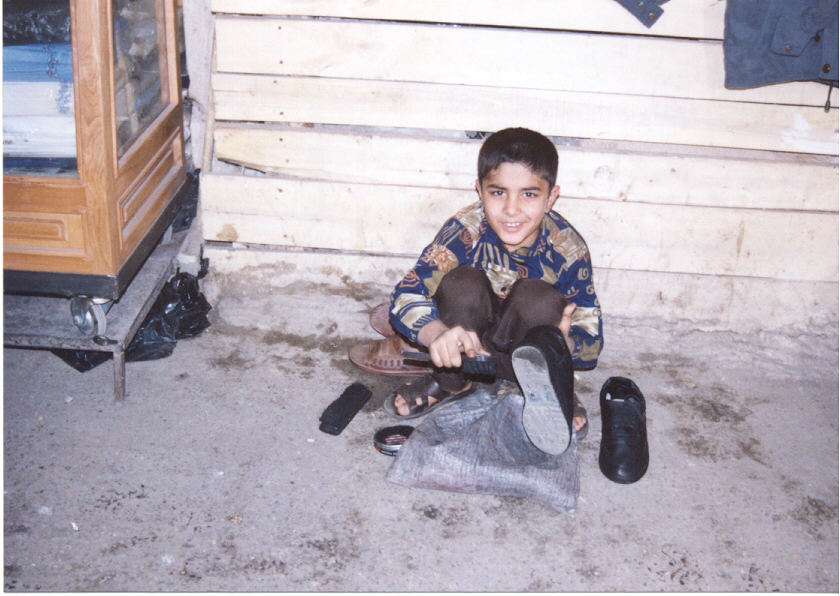|
|
|
Street children in Iran by: Mori Aminmansour
Child advocates say the number of migrants who are children has grown dramatically since 1979 (Revolution). Street children are primarily an urban phenomenon; poverty drives people in search of better opportunities to urban areas, where family ties are looser, adult supervision less, and social safety nets often nonexistent. In an effort to escape hardship, children leave what served as home and walk, hitchhike. Most of them make it only to big cities (Mashad, Tehran, Isfahan, Tabriz) to ending in situations as poor as those they left. Typically, this type of migrant is a boy, 10 to 18 years old many siblings, and mother who earns a living by washing clothes or sending her children out to sell small goods or other products. Often abused by family members, increasing numbers of these children look elsewhere for support. With no papers or any other kind of documents and little money, they are easily transformed into street children. The United Nations children’s fund (UNICEF) estimates that, around the world, there are some 100 million children for whom the streets are home.
Many migrant children sell their labor, while others, particularly Girls (age between 12-18) are sold into prostitution (in UAE, BAHRAIN, OMAN, PAKISTAN) or are Sexually exploited in other Ways, girls from different villages are taken to Islamic brothels and are at heightened risk of HIV infection. The migrant street children beg or subsist on the little money they earn picking up garbage, hawking small goods, shining shoes, and washing windshields. Police, who recognize street children’s vulnerability as migrants and criminals and tend to view such children as a public nuisance, according to human Rights watch, have been implicated in beatings, rapes and murders of street children.
The pressures on children were particularly acute in Iran where country continues to suffer the socioeconomic consequences of the war (1980-1988). Rapid population growth, and environmental degradation. To address these issues, government and groups are promoting education, vocational training, and initiatives to assist families and children in poor communities. Others engage in remedial activities that target street children, providing shelter, health care, drug rehabilitation, counseling, and job training with their families. This digest assesses the human rights situation of poor children in urban areas in IRAN particularly in cities like TEHRAN, SHIRAZ, and ISFAHAN. The following are the key features of this digest:
It considers the range of problems that these street children and their families face. It draws attention to the need for actions based on knowledge of urban areas and potential urban advantages and examines the capacity of component, accountable and transparent urban governance to promote the rights of children, enable communities and poor households to influence public policies and actions. And ensure tangible and significant progress in improving conditions in urban settlements. The key to eradicating urban poverty and exclusion lies in the development of child- friendly cities where children’s rights are made a priority in budgeting, planning and resource allocation and where children’s voices inform the democratic process. We need a multipurpose, multidisciplinary institution in 4 divisions: *Primary prevention and training include (the development and provision of education and training courses. *Clinical services (cover alcohol and other drugs, social and welfare assistance). *Epidemiological research relating to the use of psychoactive substance. · Administration and planning. We need a multidisciplinary staff, including psychiatrists, nurses, educators, social workers, administrators and secretarial staff.
References: World bank “street children” Jan, 22,2002 Human Rights watch “street children” ECPAT international “sexual exploitation and trafficking of children sep, 1,2001
|
